- Home
- Adele Griffin
The Unfinished Life of Addison Stone Page 2
The Unfinished Life of Addison Stone Read online
Page 2
CHARLIE STONE: Yeah, the guy said he was press. Jack someone. Jack Jerk-Off. Talking about my sister like they were buddies. Like he was devastated. I’d just been called home from football training camp down in Pensacola, and my whole body was ready to rumble. My sister was dead. My sister. The chair was right there. I know the story went that I pinned him. But it was more like I shoved it into him, and as he fell against the wall, he landed a lucky punch.
So I punched back, perfect connect. There’s relief in a solid connect sometimes, you know? And then Jonah Lenox—“The Lenox,” Addison always called him, he was her high school boyfriend—he jumped in. The Lenox seems gentle, but provoke him and he’ll fight to the dirty end. So before you know it, everyone’s yelling and pulling, and my fists were punching, pounding … but I was glad for the bruises. Bruises that showed, I mean.
JACK FROEK, blogger and senior staff reporter for Last Call magazine: Let me just say it: this funeral was full of scum. Townies. They’d have leg-wrestled each other for a dropped Cheeto. Same kind of hicks that killed Matthew Shepard. And in my defense, I did legit know Addison Stone from New York. I could text her anytime—what’s the plan, stone? And she’d tell me, like, going to hear DJ Generate do a “surprise” set at the Green Monkey, don’t show till midnight. And I’d be there. I’d get a quote from her, take a candid picture that really wasn’t so candid. She loved the power. Last Call always ran stories on her and got exclusive snaps of her, especially when she was with Zach Frat—he’s Carine Fratepietro’s son, you know that? Art royalty. When Zach and Addison got together, you couldn’t even see for all the photo flashes going.
Addison cruised on that love. We needed her, and she needed us. She was generous with her personal life, like she’d do pieces for us for free, just for fun, on what she ate for breakfast and where she liked to buy shoes or her art supplies—she was what we on staff called a “mode-info.” One to watch. At the same time, she didn’t do any of that Facebook or Instagram kind of self-promotion. Because while she was perfectly happy to be talked about, she didn’t want to initiate the conversation.
The big news: Zach Fratepietro and Lincoln Reed were not at her funeral. They were not standing in that dinky church basement with a plate of barbecue and Bisquik. Everyone else was there, though. Max Berger and the Lutzes and half the Broyard and Galarza family dynasties had all schlepped up to Peacedale. But neither of Stone’s boys! And I had a tip that she’d fought with not one, but both Lincoln and Zach on that night, the same night that she died.
Sure, my approach with Charlie was wrong. But that gorilla should be locked up. He fractured my tibia in two places and gave me a black eye. Did he tell you that? I spent the day in Peacedale’s hillbilly hospital, getting x-rayed. I sent the kid the bill, too. Fucker. Not that I expected it’d get paid.
Stone in Spring
by Christa Waring
Styled by Beverly Feirtag • Photos by Christopher Bacardi
Addison Stone is used to being stared at. I am staring at her now, and so is most of the crowd feigning nonchalance in the perennially overpacked Café Rouge in the West Village. We have agreed to meet for coffee before she zips uptown to Frost Gallery to see “a new friend’s” opening, and Stone is prompt, which surprises me—though it probably shouldn’t.
Long and lean in black pants and a perfectly distressed charcoal T-shirt, Stone’s model-thin good looks are at immediate odds with her cheerful decision to order an iced café mocha plus a double-fudge gluten-free cupcake. “Does anyone really know what gluten is?” she asks. “I don’t, I just know you’re supposed to banish it.” Stone’s sweet tooth is contagious, it seems. I change my own order, adding a slice of lemon cake to complement my green tea. But daytime desserts seem a fitting pleasure for a young woman with an outsized appetite for this city.
Stone is having a moment, having blasted into our consciousness last summer with her painting Talking Head, the runaway star of the Berger/Fratepietro glitz-fest. We need to know more. We need to know everything. So who is Addison Stone? She is, foremost, an artist. “I’m young, I’m a student, I have a ways to go,” she acknowledges, but even she seems to know this definition of herself is not quite correct. Working mostly in oil on canvas, Stone’s painterly portrait style is both nostalgic of another era while at the same time dismantling it, as her swashbuckling brushstroke captures powerful, beautiful
(cont. on page 128)
“I’m young,
I’m a student,
I have a ways to go.
”
LUCY LIM: The reception was emotional overspill. Addy’s mom had to go lie down on the cot in the church office. It was way too crowded. I remember thinking that it was like the dark side of the same drama she and I got when Addy first moved to New York. Addy had invited her mom down just to show her that everything was okay. It was also her mom’s birthday, so she took us both to dinner, and a movie premiere, and then to a late-night garden party in Williamsburg after. Such a crush of people loving Addy already, and all of them scrambling to be closer.
Addison Stone, Maureen Stone, and Lucy Lim, courtesy of Brian Bedrino.
Addy’s mom loved that night. Me, too. It was magic. It was the chaotic opposite of the church basement. Although Addy herself would have been amused. I could almost hear her telling me, “Lulu, my funeral was the shit! Everyone came! There was even a fight!” She’d have eaten it up with a spoon.
JONAH LENOX: Late in the afternoon, I drove around all the places where we’d gone. My grandma’s barn, our old school, the Cold Creamery. I let myself slide back in love with her all over again. I kissed her for the first time at Cold Creamery. It was in October. I bought a scoop of honeycomb, and we shared it.
We’d been sitting on the stone bench outside. Addison’d said, “I love eating ice cream when it’s cold out. Double coldness!” And she swung up her legs on my lap. Her mouth was sticky cream and honey. I wanted to ask her a million things. All those personal questions like, “What scares you? Are you a virgin? What would you do if you had a month to live? What would be your last meal on earth? What does heaven mean to you? What one word would describe you?”
But mostly I wanted to kiss her. Kissing Addison made me hungry. I was crazy for every detail of her—physically, mentally, all of her. I knew I could get closer to Addison than to anyone else in the world, even if she left me needing more. So I was relieved not to see those other dickhead guys at her funeral, Zach and Lincoln. The only good thing from that day was those two not showing.
MAUREEN STONE: When everyone was gone—when the kids who’d been camping out on our lawn had packed off to catch up with their own lives, and Charlie had headed out to be with his friends, and Roy’d slunk off to bed—my girl was still gone, too.
Do you know they never found a note? I’ve read that about half the time in suicide, there’s a note. Addison would have left one. As a mother, I know that. I know it from the deepest place in my heart. So I just can’t believe she did it on purpose. No. I won’t believe it. And yes, I do think it was strange that those young men were nowhere to be seen. Especially Lincoln. All day, I had an eye out for him. Hoping. But nothing.
How could I not have a thousand questions?
Exit Roy by Addison Stone, courtesy of Saatchi Gallery.
II.
GROWING UP STONE
ROY STONE, father: This is how I’ll go down in history, right? As Addison Stone’s father. That and her painting of me, Exit Roy. I hear it’s hanging somewhere in London, England. I got no problem with a painting of me being famous. I just don’t care for it. Maybe one day I’ll go to London and see if anyone recognizes me. I got no problem with me being famous, either.
I’ll give you the rundown on the family bloodline, how’s that to start? My people are originally from Lowell, Massachusetts. Been there generations, working in the textile industry. Spinners, mostly. Cotton cloth, linen, wool, following the mills as they built them out along to Fall River, till that work dried up yea
rs ago, when this once-great country of ours got outsourced to India and owned by China. I mean, you can’t find one thing in America that’s made by Americans anymore, am I right?
When my dad, Ethan Stone, was a boy in the ’50s, and even back when I was growing up in the ’70s, there was plenty of mill and factory jobs. Most of my stock—uncles, aunts, cousins, everyone—eventually worked down the line at Burlington Coat Factory. My folks raised us three kids in Burlington and then later in Bristol. I was the smartass who went a different path. Earned my CPA straight after college. I was a damn near genius at math. Can I tell you something? I know for a fact that Addison inherited her art brain straight from my great-great-grandmother, Dorothea Egglington. Known by everyone as Dottie.
Dorothea “Dottie” Stone née Egglington, Fall River, 1913.
Photo credt unknown; courtesy of Roy Stone.
The way Addison could tease out a design, or how she’d draw a pattern or a shape to kiss your eye and make you think … well, that was Dottie, too. She was a legend—even looked a bit like Addison. “Black Irish,” they call those looks. She could invent quilt and collar patterns—she was before her time. Now on Addison’s mom’s side, that’s mostly straitlaced teachers, with plenty of flea-bit French Catholic nuns and Canadian lumberjacks. You better not tell Maureen I said that.
MAUREEN STONE: My grandmother, Addison’s great-grandmother, Renee Arsenault—she was the spitting image of Addison. Not on the outside, but her soul. A real wild card. French-Canadian, a poet and adventuress, married twice before she met my grandfather. She traveled with one of those husbands all over the Great Lakes Region. Catching her own fish, living off the land—and then she joined a theater troupe in Vermont, the Portland Players. She was in a production of Only an Orphan Girl that was so popular it went on for almost a year. She was a maverick, Granny Renee. That’s who Addison takes after. Don’t let Roy tell you different.
Renee Arsenault, circa 1952 with an unidentified man, possibly her second husband.
Photo credit unknown; courtesy of Maureen Stone.
ROY STONE: Once both kids were up and running, Maureen decided she needed a change from Bristol, and she began chatting up Peacedale, the schools and hospitals and day care and on and on. Things that are important to a mother. I had no reason to stay in Bristol. Plus it never helps a man to argue with his wife, am I right?
So when Maureen found us the house with the white picket fence, I rolled easy with it. Got a job working over at RoterMeril, in general accounting. The hours were tolerable, and the benefits weren’t bad. At the time, Allison was just about five years old. That was when we called her Allison—you know she changed her name on her own? We named her after my mother. She got Allison from my side, and Grace is Maureen’s mother. Allison Grace Stone. But I guess that wasn’t good enough for her. Sure, it disappoints me. Addison—that’s nobody’s name!
Peacedale was a decent living. Bramble Circle, where we lived, had friendly neighbors and clean lawns. First afternoon we moved in, you want to know what I did? I strung up a hammock. Like I said, I’m a casual man, I can settle in anywhere.
KARL TAEKO: My wife Ele and I lived across the street from Roy and Maureen Stone. They don’t live here now, but the day they moved in, must have been fifteen years ago, my Ele starts stalking our yard like a gladiator. “Ole wale, pupule, pupule!” That’s Hawaiian for, basically, “this shit ain’t right.”
“Aw, they’re a nice family,” I kept saying. “You’ve got your hackles up for nothing.”
Ele wasn’t fooled. Right off, Ele decided that Maureen Stone was a sorrowful woman. That Roy was too reckless. And the daughter was the worst combination: the dark spirit of them both. Ele even asked our shaman to perform a la’au kahea on our house, and she hung chimes on our porch to distract her mind from their crazy—the pupule, she calls it. Those chimes are still right out front.
Since Addison died, Bramble Circle’s turned into a tourist attraction. Kids converge all hours to lay down flowers and votives, or they purple-spray-paint on the doorstep. July—that’s the month Addison died—was when we got most of ’em. Sleeping out on the lawn. They’ll leave boxes of Marlboros and drawings and cards and vodka. Me and Ele collect it, and we put it in the garbage.
Roy and Maureen packed up and left 28 Bramble almost a year ago now. I know Maureen’s living with her sister in New Jersey. I hear Roy’s shacked up with some lady friend in a houseboat in Woonsocket. Ele and me, we’re thinking of moving off somewhere different, too. The spirit here’s been troubled for a real long time.
CHARLIE STONE: Peacedale was supposed to be the Stone family’s fresh start. Addison said even before I was born, she knew that Dad and Mom’s marriage was shattered, and she worried about me. She said she’d babble at me during Mom’s pregnancy. Press her mouth against Mom’s belly and make funny noises to let me know I’d be okay. I don’t doubt any of that. She was a real sweet sister.
I was four when we moved in, but Addison was going on six and remembered things. Like how Mom had a shit-fit because Dad had sent our stuff too cheap from Bristol. A mess of her wedding china was smashed. She was in tears, chucking the junk out on the back porch. Later Addison sneaked outside for the boxes, found a tube of rubber cement, and glued the fragments up on her wall in a mosaic. Took her all day, and she sliced her hand to pieces. Nobody watching, ’cause nobody ever was. Nine stitches. Addison told me she’d just wanted to make something beautiful out of something broken.
LUCY LIM: I’ll never forget when my eyes clapped on Allison Grace Stone, out on the South Road School playground. The Friday before, our teacher, Miss Katie, had told us a new girl was coming to join our class. I was batshit excited. I was only in kindergarten, and I had already figured out that nothing new ever happens at South Road.
That next Monday morning, she was the first thing I saw, galloping around on a pretend horse, making loud neighing noises, not caring that everyone was watching. She was called Allison back then, and she was obsessed with horses and unicorns—two things she never liked me to remind her about, ha ha. Allison Stone was skinny as a rail post, long legs and a chop of bangs just like me. But even then she had an eerie way of looking straight at and deeply through a person—and that wasn’t like me at all.
Addison Stone, age five, courtesy of Maureen Stone.
She was so smart you could feel it come off her like heat, and I needed to be her friend so hard it hurt. In the end I guess it got tiresome for her, to have everyone always wanting her so bad. But she picked me that first day. She called me Lulu, and I called her Ally—and that was it. And later, when she changed it, I called her Addy. I never even asked why. It fit her better, anyway.
KATE ORTEGA: I was Addison’s first-grade teacher, “Miss Katie,” as the kids said, at South Road School. We were a month into fall semester, and suddenly we get word that a child is transferring in. She’d been homeschooled, but on the phone, her mother assures me her daughter’s the brightest penny I’ll ever meet. All parents say those things. I just prayed she wasn’t too far behind, or delayed. But that first morning, I saw the daring in that little girl’s face. Her presence was older than her years. She moved through our classroom as if she were on a stage. She was already destined for bigger things.
I can’t remember when, exactly, we did our classroom unit on favorite animals. But that was when she first drew something. It was a unicorn. She let me keep it, because she knew I loved it so much.
“How did you make this?” I asked her.
“It’s from behind my eyelids, Miss Katie,” Addison told me.
“What do you see behind your eyelids?” I asked her.
“The whole world. Only more of it,” she answered. “There’s a lot more behind my eyes than whatever’s in front of them.”
She won me over that day. She reminded me of a line from Keats: “I want a brighter word than bright, a fairer word than fair.”
I tried not to see the other side of Addison—a darker word than dar
k. But if you were to ask me if darkness was in her, too, I’d have to say yes. Even as a little girl, yes. I saw the black opposite of bright.
Believe by Addison Stone, age seven, courtesy of Kate Ortega.
LUCY LIM: From early days, kids were calling her Artist Girl. Her talent made her known. I wouldn’t say popular—she was too freaky-deek for that word. But known. Plenty of kids were turned off by Addy’s dominating energy. The way she told other kids their paintings weren’t any good, or how she stole all the best chalks and paint-boxes, or her hair-trigger temper if “cleanup time” surprised her in the middle of a project.
But she’d give her art away like it was nothing. She had a flip side, always, that was generous to a fault. “Here, this one’s for you, Tatum, because I know you love dolphins.” And she wasn’t even friends with Tatum. I remember how we’d all stand over Addy’s shoulder and watch her draw. Me always closest because she’d picked me out for special. Have you seen any of her art from when she was in grade school? Holy smokes, am I right?
KATE ORTEGA: There wasn’t a child in my first-grade classroom more gifted than Allison Stone, and I don’t expect there ever will be. That first month, I sent an email blast to all the other teachers with attached images of her art. I wanted to give everyone a heads-up that this girl was extraordinary. Her cutout collages and her pencil drawings, even her watercolors were far beyond her years. There were hers, and then there were every other child’s. Her mind was always a fresh bouquet of observations and conclusions. I needed the other educators to know that. Honestly, I felt it was my duty. Why? Well, because genius is such a rare animal. You want to acknowledge its presence, but you don’t want to scare it off.

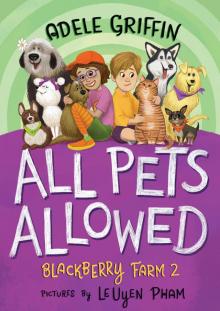 All Pets Allowed
All Pets Allowed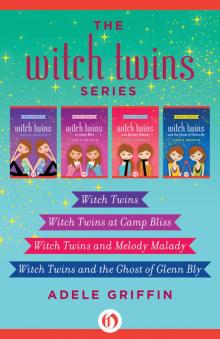 Witch Twins Series
Witch Twins Series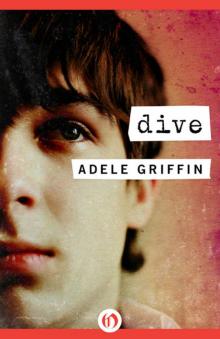 Dive
Dive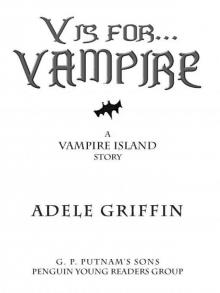 V is for...Vampire
V is for...Vampire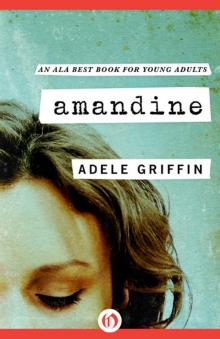 Amandine
Amandine The Knaveheart's Curse
The Knaveheart's Curse Picture the Dead
Picture the Dead My Almost Epic Summer
My Almost Epic Summer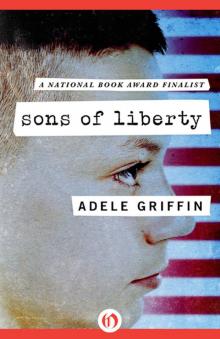 Sons of Liberty
Sons of Liberty Overnight
Overnight Witch Twins
Witch Twins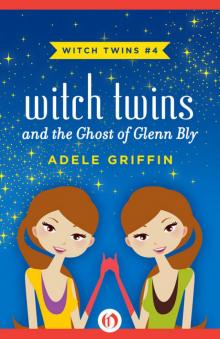 Witch Twins and the Ghost of Glenn Bly
Witch Twins and the Ghost of Glenn Bly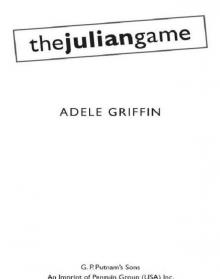 The Julian Game
The Julian Game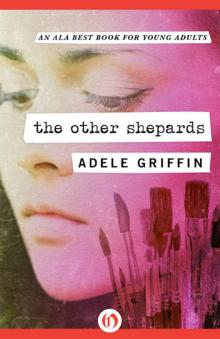 Other Shepards
Other Shepards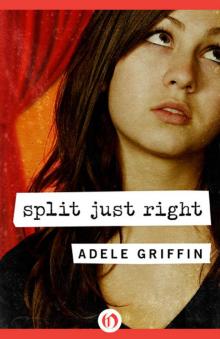 Split Just Right
Split Just Right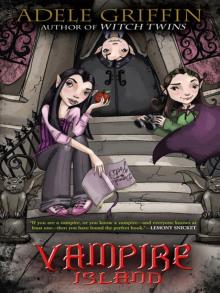 Vampire Island
Vampire Island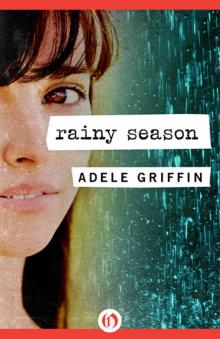 Rainy Season
Rainy Season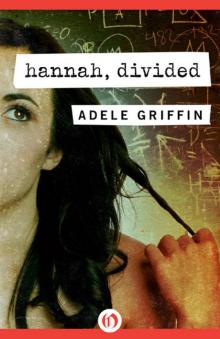 Hannah, Divided
Hannah, Divided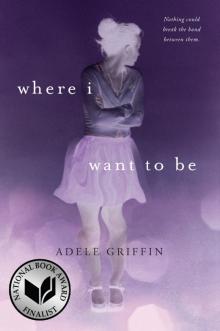 Where I Want to Be
Where I Want to Be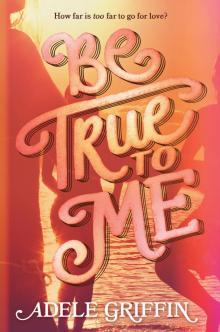 Be True to Me
Be True to Me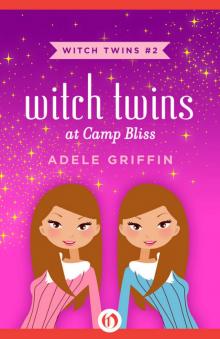 Witch Twins at Camp Bliss
Witch Twins at Camp Bliss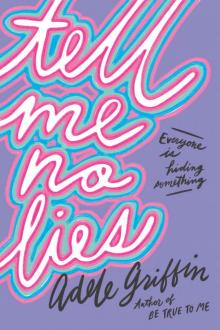 Tell Me No Lies
Tell Me No Lies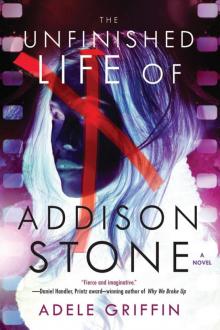 The Unfinished Life of Addison Stone
The Unfinished Life of Addison Stone